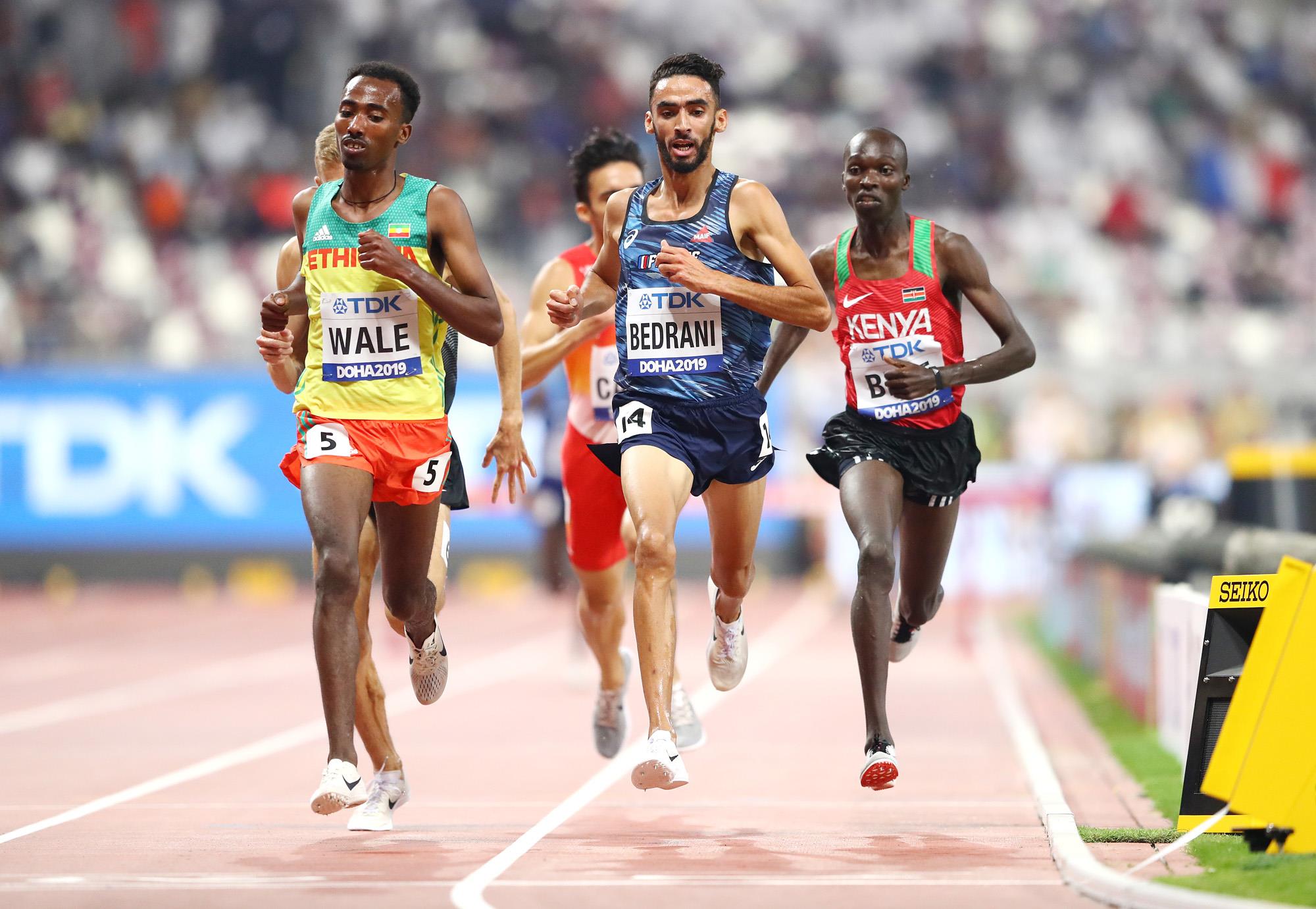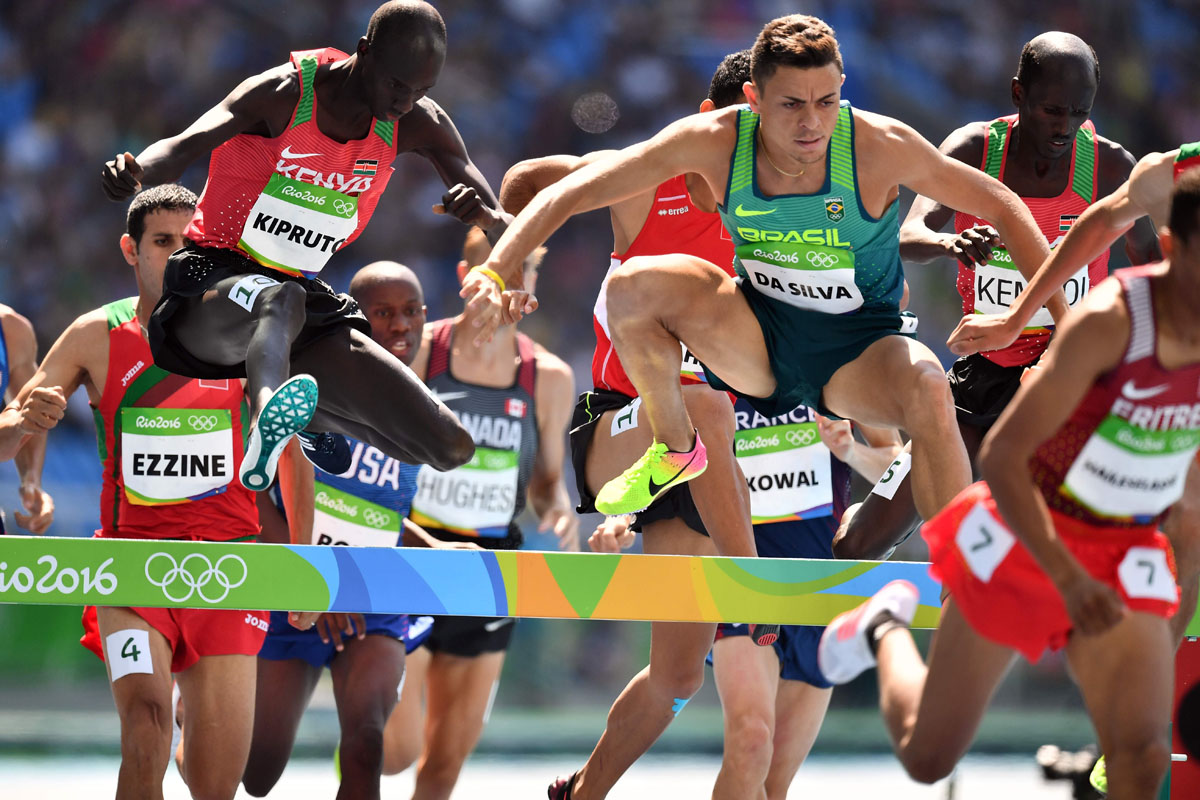The Mechanics of a Steeplechase Fall: Men’s Steeplechase Fall

The steeplechase, with its hurdles and water jump, is a challenging event where falls are a common occurrence. Understanding the mechanics behind these falls is crucial for athletes, coaches, and spectators alike. By analyzing the biomechanics and common causes, we can gain insights into how to prevent falls and minimize the risk of injury.
Common Causes of Steeplechase Falls
Falls in steeplechase races can be attributed to various factors, including technical errors, environmental conditions, and physical fatigue.
- Hurdle Technique: Improper hurdle technique is a primary cause of falls. Incorrect foot placement, inadequate clearance, or a lack of coordination can lead to tripping or stumbling over the hurdle.
- Water Jump Execution: The water jump presents unique challenges. Poor landing technique, inadequate water depth, or slippery conditions can cause athletes to lose their balance and fall.
- Fatigue: As the race progresses, fatigue can affect an athlete’s reaction time, coordination, and overall stability. This can increase the risk of falls, especially during the final laps.
Biomechanics of a Steeplechase Fall
A steeplechase fall involves a complex interplay of forces acting on the body.
The impact force of a fall can be significant, especially when landing on a hard surface. This force can be amplified by the athlete’s speed and the angle of impact.
- Impact Force: When an athlete falls, their body experiences a sudden deceleration, resulting in a significant impact force. The magnitude of this force depends on the athlete’s speed, the surface they land on, and the angle of impact.
- Joint Forces: Falls can cause excessive stress on joints, leading to sprains, strains, or even fractures. The severity of the injury depends on the force of impact, the joint involved, and the athlete’s overall fitness.
- Muscle Strain: During a fall, muscles may be stretched or torn as the body attempts to regain balance or absorb the impact. This can lead to muscle pain, stiffness, or even a complete tear.
Types of Steeplechase Falls, Men’s steeplechase fall
Steeplechase falls can occur in various ways, each with its own distinct biomechanics.
- Tripping over Hurdles: This type of fall usually occurs when an athlete misjudges the hurdle height or has poor foot placement. The athlete may trip over the hurdle, lose their balance, and fall forward or backward.
- Slipping in the Water Jump: The water jump is notorious for causing falls due to slippery conditions. Athletes may slip on the wet surface, lose their footing, and fall into the water.
- Losing Balance During a Sprint: Fatigue and exhaustion can lead to a loss of balance during a sprint. Athletes may stumble or fall as their legs become fatigued and their coordination deteriorates.
The Impact of Falls on Performance and Safety

A fall in a steeplechase race can have significant consequences, impacting both the athlete’s performance and their safety. While the thrill of the steeplechase lies in its unique challenges, the inherent risk of falling necessitates a careful understanding of its impact and the measures implemented to mitigate it.
The Consequences of Falls
Falls in steeplechase races can result in a loss of valuable time, potentially jeopardizing the athlete’s position in the race. A fall can lead to a significant delay as the athlete recovers and rejoins the competition, allowing other competitors to gain a substantial lead.
Furthermore, falls pose a significant risk of injury, ranging from minor abrasions and sprains to more serious fractures and concussions. The impact of falling onto the hard track or colliding with obstacles can result in severe injuries, potentially leading to long-term health complications and even career-ending setbacks.
Beyond the immediate consequences, falls can also have a significant psychological impact on athletes. The fear of falling can affect their confidence and decision-making, leading to a more cautious approach to the race, which may ultimately hinder their performance.
Safety Measures in Steeplechase
To mitigate the risks associated with falls, steeplechase races incorporate several safety measures. The design of the hurdles is crucial, with rounded edges and a stable construction to minimize the risk of severe injuries during contact. The water jump is another critical element, featuring a gradual slope and a safe landing area to reduce the impact of the fall.
Moreover, the presence of experienced medical personnel at the event is essential for providing immediate medical attention in case of an injury. A well-coordinated medical response protocol ensures swift diagnosis and treatment, minimizing the potential for long-term complications.
Common Injuries in Steeplechase Falls
The following table summarizes the most common injuries sustained in steeplechase falls, highlighting their severity and potential long-term effects:
| Injury | Severity | Long-Term Effects |
|—|—|—|
| Ankle sprain | Mild to moderate | Potential for chronic instability, limited range of motion |
| Knee ligament injury | Moderate to severe | Potential for instability, osteoarthritis, limited mobility |
| Concussion | Mild to severe | Potential for headaches, dizziness, memory problems, cognitive impairment |
| Fractures | Moderate to severe | Potential for permanent disability, limited mobility, pain |
Notable Steeplechase Falls and Their Impact

Steeplechase falls are an unfortunate but inevitable part of the sport. They can happen at any time, and their impact can range from minor injuries to career-ending setbacks. These falls are often spectacular and memorable, leaving a lasting impact on the sport and its athletes.
Memorable Steeplechase Falls
The most memorable steeplechase falls are those that involve significant injuries or have a profound impact on the race outcome. These falls often become part of the sport’s folklore, serving as cautionary tales for future generations of athletes.
- 1992 Olympic Games: In the men’s 3,000m steeplechase final at the Barcelona Olympics, Kenyan runner Moses Kiptanui, the reigning world champion, was leading the race when he tripped over the water jump and fell. He sustained a serious injury and was unable to finish the race, which was eventually won by his teammate, Matthew Birir. This fall is considered one of the most iconic in steeplechase history, as it showcased the unpredictable nature of the event and the importance of maintaining focus throughout the race.
- 2008 Beijing Olympics: The men’s 3,000m steeplechase final at the Beijing Olympics was a dramatic race, with several athletes falling over the water jump. The most notable fall involved the eventual winner, Brimin Kipruto of Kenya, who tripped over the barrier and fell just before the finish line. He managed to recover quickly and win the race, but the fall highlighted the importance of maintaining focus and composure, even in the most challenging moments.
- 2012 London Olympics: The women’s 3,000m steeplechase final at the London Olympics was a thrilling race, with several athletes battling for the lead. However, the race was marred by a fall involving the eventual silver medalist, Habiba Ghribi of Tunisia, who tripped over the water jump and fell with just a few laps to go. She managed to get back on her feet and finish the race, but the fall likely cost her the gold medal. This fall demonstrated the importance of maintaining focus and composure throughout the race, as even a small mistake can have a significant impact on the outcome.
Impact on Safety Regulations and Race Strategies
Steeplechase falls have had a significant impact on the development of safety regulations and race strategies. In response to these falls, governing bodies have implemented changes to the course design, including the addition of safety barriers and the modification of the water jump. Additionally, athletes have adapted their training and race strategies to minimize the risk of falls, focusing on technique, strength, and mental preparation.
“The steeplechase is a dangerous event, but it’s also a beautiful one. The falls are part of the sport, and they make it exciting. But we have to be careful. We have to train hard and be smart. We have to focus on our technique and our strength, and we have to be prepared for anything.” – A steeplechase runner, reflecting on the risks and rewards of the event.
Men’s steeplechase fall – It’s always a bummer to see a runner take a tumble in the steeplechase, especially when they’re going for a win. It reminds me of natalia kaczmarek and how she bounced back from her own tough moments. Those water jumps are tricky, but I guess that’s part of what makes the steeplechase so exciting!
The men’s steeplechase is a thrilling event, full of twists and turns. You never know who will trip on a hurdle or fall in the water jump. But one runner who always seems to rise above the challenge is el bakkali , a Moroccan legend known for his incredible stamina and focus.
His ability to maintain his composure even after a fall is inspiring, reminding us that even in a race as demanding as the steeplechase, perseverance can lead to victory.